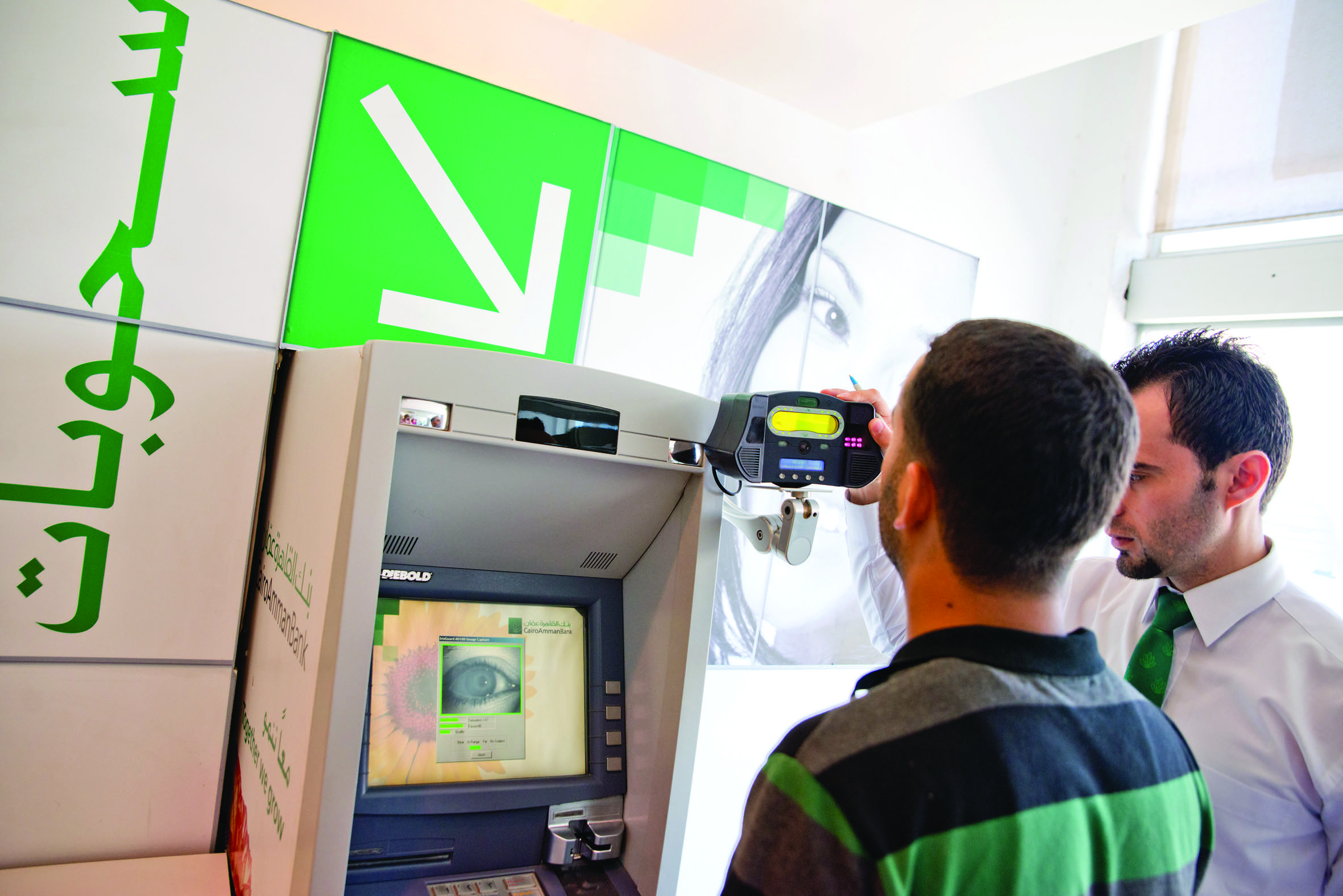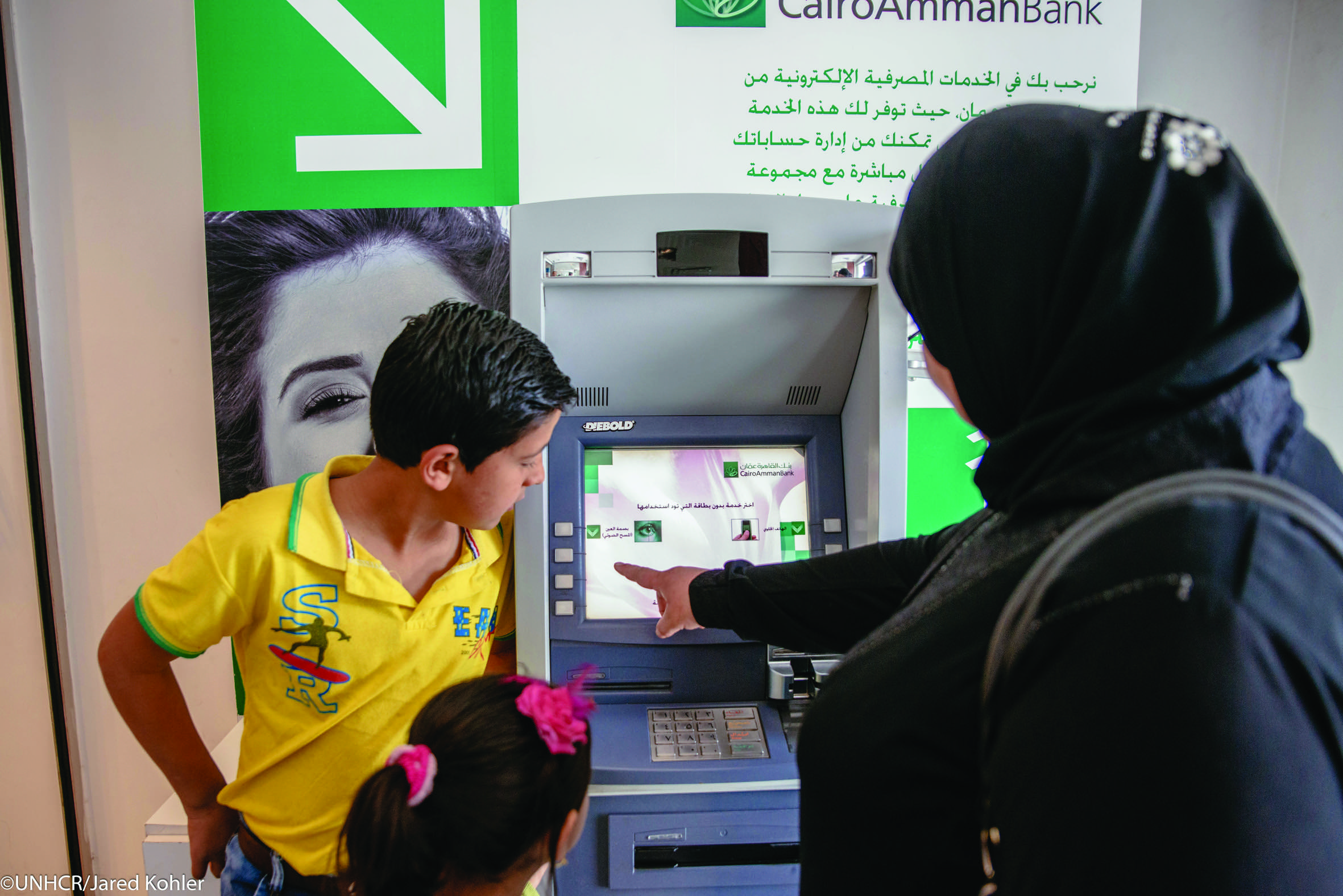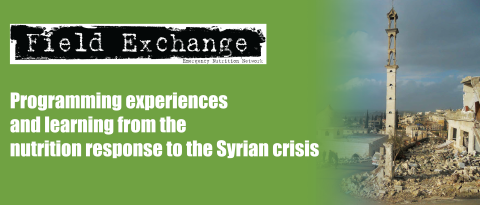UNHCR cash programming in emergencies – implementation and coordination experience during the Syrian refugee response in Jordan
 By Volker Schimmel
By Volker Schimmel
Volker Schimmel is UNHCR’s Head of Field Office Amman and manages the agency’s cash assistance programme in Jordan. He has worked in refugee and displacement situations with UNHCR, UNRWA and OCHA.
How did we get here?
Over the last decade, two distinct trends have pushed cash-based interventions1 to the fore of international refugee response operations. The first one is the phenomenon of urban refugees and the second one is the maturity and acceptance that cash assistance has reached of late. Urban refugees, which is an amorphous category mostly describing refugees who do not live in designated camps or sites, have certainly come back into focus with the Iraqi refugee crisis and the Syrian refugee crisis2. Historically, urban refugees have always been the core of UNHCR’s work, but after decades of resource-intensive and headline-grabbing camp-based responses, this focus needed to be strengthened3. Currently, UNHCR runs significant urban responses in the Americas, in the Middle East and in Asia and for some years, UNHCR has been working on refining its policy and operations to adapt to these new settings4.
 Jordan provides a particular example of an urban refugee context as it has been generously hosting both Iraqi and Syrian refugees in large numbers. UNHCR in Jordan was one of the first operations implementing a large-scale cash assistance programme during the Iraqi influx, which is why the operation was able to leverage the existing system swiftly to respond to the Syrian influx. Although Jordan is home to the very large well-known refugee camp of Zaatari, urban refugees make up over 80% of the refugee population in the Hashemite Kingdom.
Jordan provides a particular example of an urban refugee context as it has been generously hosting both Iraqi and Syrian refugees in large numbers. UNHCR in Jordan was one of the first operations implementing a large-scale cash assistance programme during the Iraqi influx, which is why the operation was able to leverage the existing system swiftly to respond to the Syrian influx. Although Jordan is home to the very large well-known refugee camp of Zaatari, urban refugees make up over 80% of the refugee population in the Hashemite Kingdom.
The maturation and increased acceptance of cash assistance is probably best understood through literature review and the swathes of publications on cash assistance in the last five years5. The period of expansion can be placed somewhere around 2006 when only six donors funded cash assistance, and 2011 when 41 donors were involved in cash assistance (largely in the context of humanitarian programming). Another manifestation of this trend is the creation of the Cash Learning Partnership (CaLP) initiative (www.cashlearning.org), which should be understood as a successful attempt to promote cash-based assistance through capacity building, research, advocacy and information sharing.
Cash-based interventions run by UNHCR in Jordan
Drawing on the increased acceptance and sophistication of cash-based assistance systems, UNHCR in Jordan has been able to develop a state-of-the-art cash assistance system, which is fully secured through biometric identity verification to prevent fraud. It is unrivalled in terms of cost-effectiveness and efficiency in UNHCR’s current operations worldwide.
Despite the fact that there are more than half a million registered refugees dispersed across Jordan, UNHCR in close collaboration with its partner International Relief and Development (IRD), has managed to conduct individual assessments based on home visits for all cases. Between 2012 and September 2014 over 170,000 visits were undertaken6. This wealth of information is then used by a case management committee to determine eligibility based on pre-defined criteria. Eligibility is re-assessed at regular intervals (12 months at the most) and process and impact are continuously measured by quarterly post-distribution monitoring (PDM) exercises.
As of October 2014, UNHCR Jordan was assisting 22,692 families (20,492 Syrian and 2,200 or IRQ, SUD and SOM nationality) with monthly cash assistance. The level of assistance ranges from 7$5 USD to $400 USD depending on family size and vulnerability. In 2014, UNHCR was responsible for 75% of the cash transfer volume in Jordan. The total amount transferred to refugees in October 2014 was $3.1 million USD.
The delivery mechanism is the ATM network of UNHCR’s partner Cairo Amman Bank. The system does not require any card or PIN code; instead the beneficiary has their iris scanned at the ATM itself, which validates the identity and authorises the pay-out without requiring any further action. The system has been widely recognized as cutting-edge and has not had a single fail in trillions of transactions across all accounts at Cairo Amman Bank. As a result, UNHCR has been able to transfer over $50 million USD to the most vulnerable Syrian refugees in Jordan over a two year period starting in mid-2012. Disbursements have been above $30 million USD in 2014 alone. Cash transfers allow UNHCR to implement directly rather than to sub-contract work, which means that the programme is one of the most cost-effective models of delivering assistance to refugees at less than three per cent overhead. Thus, not only is it ensured that over $97 USD of every $100 USD donated goes directly to the refugees, but the system set up by UNHCR in Jordan ensures that it also goes to those in need – due to the individual assessments – and reaches them without fail – due to the biometrics component of the delivery mechanism.
 Process and impact monitoring also corroborate this. Moreover, customer satisfaction is high. Refugees consistently report that at a rate of around 95% that the service had functioned without any disruptions or problems. Moreover, if level of assistance is carefully calibrated to ensure that cash assistance is a cash complement, the appropriate usage of cash assistance is high. UNHCR PDMs show that 98% of the assistance is spent on basic needs ranging from rent (84%) to children’s needs (8%) to food and health (8%).
Process and impact monitoring also corroborate this. Moreover, customer satisfaction is high. Refugees consistently report that at a rate of around 95% that the service had functioned without any disruptions or problems. Moreover, if level of assistance is carefully calibrated to ensure that cash assistance is a cash complement, the appropriate usage of cash assistance is high. UNHCR PDMs show that 98% of the assistance is spent on basic needs ranging from rent (84%) to children’s needs (8%) to food and health (8%).
In March 2014, UNHCR teamed up with the World Bank for a pilot on welfare modelling7, which also included an impact assessment of the cash assistance programme using re-assessment data from follow-up home visits. It produced two important findings. Firstly, the exclusion error of the case management system compared with a welfare modelling system was 1%, whereas the inclusion error was 4.7% for a welfare based approach. Secondly, UNHCR’s cash assistance was able to reduce the number of refugees living below the poverty line by 10% across Jordan and in certain Governorates, such as Amman, by up to 15%. The emphasis on the assistance itself often overlooks the additional benefits of this type of programme that is achieved at the same time, in terms of protection of refugees. An interesting study in 2012, which included Jordan, showed how critical cash assistance is in order to enhance the protection of refugees, particularly in non-camp settings8. Protection is first and foremost ensured by not stigmatising the refugee through, for example, distribution of in-kind assistance at designated centres. Since urban refugees are rarely assisted with shelter support, contrary to refugees in camp settings, cash assistance enables them to secure their dwelling and household and avoid exploitation. Cash assistance effectively makes any refugee a customer and participant in a market, who is able to act and make decisions as any other citizen of their country of refugee would.
 Certainly, cash assistance projects – even if they are as advanced as UNHCR’s Jordan programme – can always be improved. One avenue that is currently being worked on by UNHCR in close collaboration with the World Bank is to move away from the resource-intensive case management approach of the decision-making and to apply instead a system of modelling with safeguards. This would ensure good targeting based on minimal information that can be collected during registration with UNHCR, which includes biodata, information about the family composition, professional, educational and social background as well as current location. It would eliminate the need for, and overhead of, a home visit – and mitigate any exclusion errors through safeguards (including a home visit) and an appeals system. An extension and roll out of this is through the inter-agency vulnerability framework (or VAF) which is currently being elaborated in Jordan. The framework combines modelling and criteria-based decision making elaborated by key partners in the refugee response, including UN agencies, international non-governmental organisations, donors and refugees.
Certainly, cash assistance projects – even if they are as advanced as UNHCR’s Jordan programme – can always be improved. One avenue that is currently being worked on by UNHCR in close collaboration with the World Bank is to move away from the resource-intensive case management approach of the decision-making and to apply instead a system of modelling with safeguards. This would ensure good targeting based on minimal information that can be collected during registration with UNHCR, which includes biodata, information about the family composition, professional, educational and social background as well as current location. It would eliminate the need for, and overhead of, a home visit – and mitigate any exclusion errors through safeguards (including a home visit) and an appeals system. An extension and roll out of this is through the inter-agency vulnerability framework (or VAF) which is currently being elaborated in Jordan. The framework combines modelling and criteria-based decision making elaborated by key partners in the refugee response, including UN agencies, international non-governmental organisations, donors and refugees.
The second area of innovation is the plan to connect the payment system in a highly secured and encrypted manner to UNHCR’s registration database, which is also based on the same system for biometric identity verification. Once this connection is in place, it will allow any partner in the refugee response to deliver cash assistance through the bank whilst always relying on the most recent registration information as updated by UNHCR. This will eliminate the problem of outdated data being used by partner organisations, who only collect the information during the assessment stage, but are often not able to respond to changes in registration status over time, thereby at times serving refugees who are no longer registered.
Coordinating cash assistance in a refugee response
There is an emerging body of literature on coordination of cash interventions in humanitarian settings9. The case of Jordan is no exception. The so-called Cash Working Group was one of the first coordination groups to be created in 2012 in order to harmonise the refugee response in Jordan. Over the course of the next two years, important strides forward were made. The Working Group elaborated common criteria for eligibility, a joint PDM system, a referral mechanism, a system to check against and prevent cases of duplicate assistance, as well as a Minimum Expenditure Basket. It also set out a strategic work-plan, defined levels of vulnerability across the population and developed the broader targeting methodology under the VAF. However, many challenges for coordination remain – partly due to the fact that cash provision as a response modality has been used to provide support for multiple sectors in Jordan over the course of the crisis. In response, any conditional cash assistance was managed not through the Cash Working Group, but the working group covering the ‘conditionality’. As such, cash for rent, for example, started to be managed by the Shelter Working Group from 2013. This means that the value and raison d’etre of a Cash Working Group has been gradually diminishing. Furthermore, it is still a formidable obstacle to align levels of assistance, which is partly due to the fact that projects are usually defined by the budgets first and by the coordination standards second. This issue can and should also be explored further from a Good Humanitarian Donorship (GHD) perspective10.
Overall, however, the cash coordination system in Jordan should be considered a success, as it has managed to create a baseline, shift the inter-agency operation towards an evidence-based way of programming and created standards for each stakeholder – including donors – to follow and enforce in order to ensure an equitable and predictable assistance system putting the protection and needs of refugees first.
Conclusion
In a context of large-scale urban refugee response, cash as a modality is here to stay. It is not only a very fast and cost-effective way to deliver assistance, but, if designed well, also ensures very efficient use of humanitarian funding. UNHCR’s Jordan operation has in many ways proven this and set a standard for future implementation, whilst emphasising the need to continuously innovate and iterate in order to maximise cost-effectiveness and efficiency of protection and assistance delivery to refugees across the globe.
For more information, contact: Volker Schimmel, email: schimmel@unhcr.org
1 Organisations use different terms for cash assistance. The most commonly used term is cash transfer programmes (CTP), but cash assistance (CA) and cash based interventions (CBI) are also regularly found.
2 See for example: http://www.unhcr.org/516d658c9.html?
3 Merrill Smith. Warehousing Refugees: A Denial of Rights, a Waste of Humanity. World Refugee Survey 2004
4 See for example UNHCR’s Alternative to Camps Policy: http://www.unhcr.org/5422b8f09.html?
5 DfID Literature Review: http://r4d.dfid.gov.uk/PDF/Articles/cash-transfers-literature-review.pdf?
6 Syrian refugees living outside camps in Jordan. Home visit data findings, 2013. Available at: www.unhcr.org/urban
7 Modelling means applying econometric and statistical methods in order to arrive at ways of predicting the welfare of a family through proxy means testing. It uses a sample of households and detailed information of their vulnerability and then tests for the strongest predictors of poverty. These could be family size, size of the dwelling, single parent households, etc.
9 See for example: http://www.cashlearning.org/downloads/120618 Groupe URD_Cash coordination_comparative study_Final.pdf?


